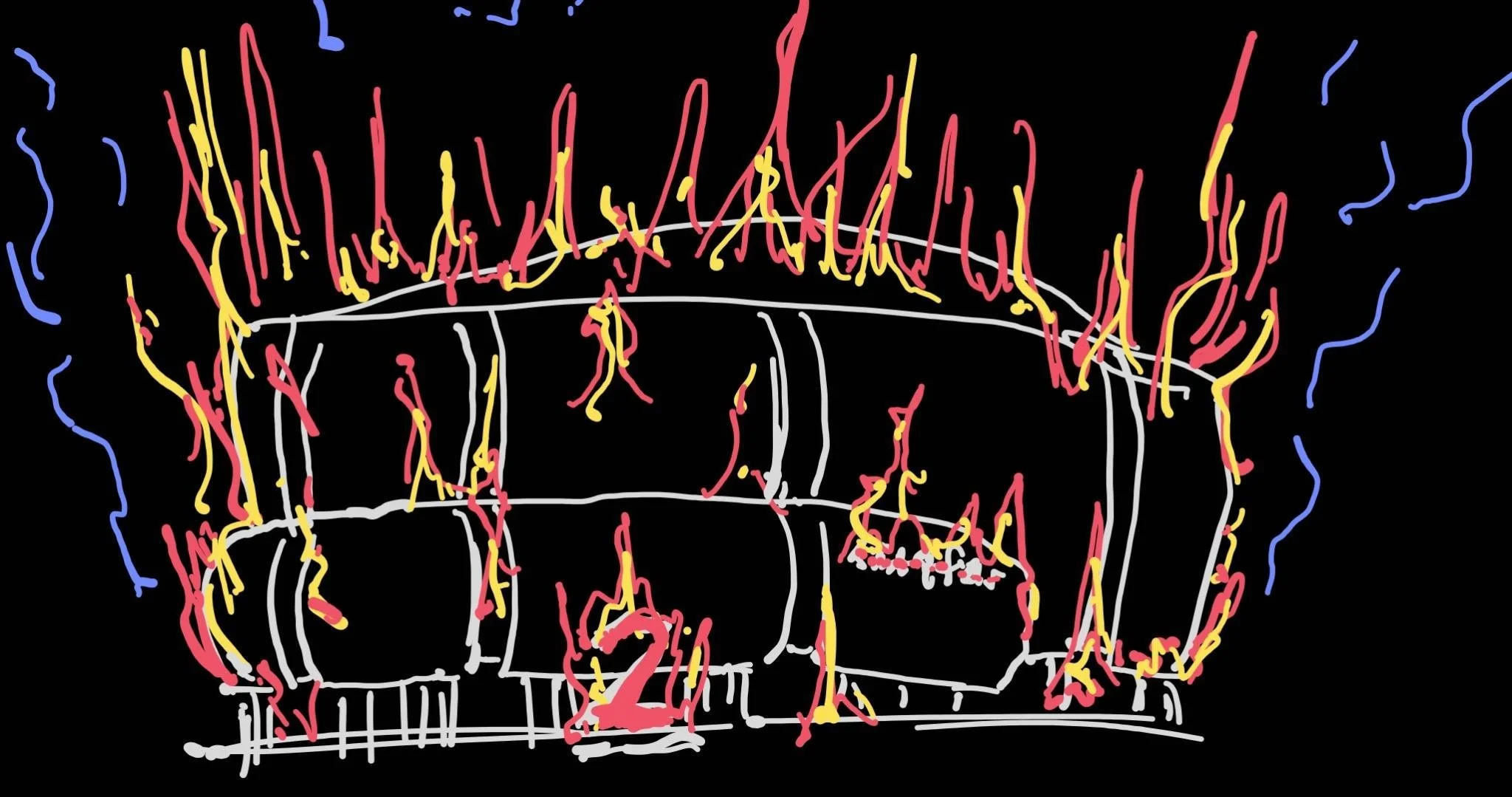“One Last Hurrah”: Extremist Blog Publishes First-Person Account Framing Charlie Kirk Memorial as Security-State Spectacle
Executive Summary
A Portland/Arizona-focused counter-information site published a narrative, first-person account of the Charlie Kirk memorial in Glendale, Arizona, portraying it as a mass-mobilized, quasi-religious far-right spectacle heavily buttressed by multi-agency security. The piece blends gonzo reporting with ideological taunts, highlights perceived federal/security posture (ATF signal trucks, drone jammers, mounted units), and normalizes hostile rhetoric toward attendees—adding to a growing ecosystem that documents and agitates around right-wing events to inspire anti-government radicalization.
Key Judgments
1. The post aims to delegitimize the event by casting it as cultic pageantry fused with state power, thereby reinforcing anti-government narratives among far-left audiences.
Evidence: The writer describes the memorial as a “Protestant cult ritual,” fixates on security choreography (Secret Service checkpoints, mounted police, ATF radio/jammer capabilities), and frames speakers as authoritarian or theocratic, positioning attendees as participants in “commercialized fascism.”
2. Operational details about security posture—whether accurate or embellished—function as soft targeting intel and propaganda for counter-mobilization.
Evidence: The account references specific security elements (signal trucks, drone jammers, perimeter fencing, armored vehicles, agency roles), describes traffic choke points, and notes perceived vulnerabilities (crowd lines, overflow venues), which can inform hostile planning even when imprecise.
3. The narrative leverages mockery, dehumanization, and anecdotes about extremist symbols (e.g., alleged Klan insignia) to normalize confrontation and deepen movement identity.
Evidence: The author celebrates antagonistic themes (e.g., “out-American” Klansmen cover, derisive portrayals of mourners and security), while mixing personal kit references (handgun, mags, tourniquet) into the storyline—stylistic cues common in agitation content that valorizes risk and prepares readers for escalation.
Analysis
This piece exemplifies the counter-info genre’s hybrid of on-the-ground color, ideological framing, and lightly operational content. By embedding in a high-profile right-wing memorial and narrating security logistics, the author translates a mass event into a cautionary fable about “commercialized fascism” shielded by a sprawling law-enforcement apparatus. The rhetorical move is twofold: strip the event of moral legitimacy (religious spectacle, corporate kitsch, authoritarian paeans) and imply that only conspicuous force can sustain it.
The post’s repeated attention to perimeter architecture, agency presence, traffic management, and radio/jamming capabilities serves a propaganda and practical function. Even absent precision, such details habituate readers to think in terms of routes, lines, checkpoints, and comms—an “operational gaze” that can lower barriers for future counter-mobilizations. The narrative’s casual references to carrying a firearm and medical gear, alongside contempt for police, further normalizes a posture of preparedness that straddles protest culture and insurgent aesthetics without issuing explicit directives.
Stylistically, the piece relies on mockery and moral inversion—depicting attendees as consumers duped by spectacle, elevating antagonism as authenticity, and invoking antifascist cultural touchstones (e.g., “Bella Ciao”). The alleged sighting of extremist insignia and fixation on speaker rhetoric (martyrdom, “Christian nation” themes) buttress the author’s thesis: the memorial is less grief than mobilization. For monitoring and security stakeholders, such posts matter not because of any single claim, but because they continually translate mainstream right-wing gatherings into grievance fuel for radical peers, while seeding ambient operational cues.
Sources
Saguaros & Sabotage – One Last Hurrah of a Commercialized Fascist


